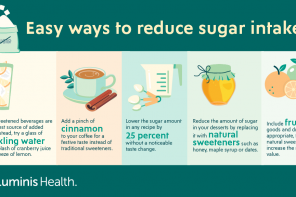Who doesn’t love a turkey sandwich with freshly baked bread for lunch? Or who would ever say no to cheesy lasagna for dinner? Besides tasting good, what both of these foods have in common is gluten.
Gluten is a protein found in grains, wheat, barley and rye. Foods like bread, baked goods, crackers, pasta and cereals contain gluten. This protein gives dough its elasticity and acts like a glue, which gives foods like bread its chewy, soft texture we all love.
The term “gluten-free” has evolved from diet trend to big business. To put it into perspective, market trends suggest that gluten-free products could be worth as much as $7.5 billion by 2020. Some surveys have found over 25 percent of people stating that they are looking to cut gluten out of their diet for health reasons.
READ MORE: Why does nutrition advice change?
However, there is a nutritional downside to going gluten-free. If you unnecessarily cut out gluten, you may be risking nutrient deficiencies. Gluten-free products are lower in fiber and contain white rice flour or various starches. They also have more fat and sugar to make them bind together and taste better. And even if junk food is labeled as gluten-free, it’s still junk food, so keep this in mind if weight loss or eating a healthier diet is your goal.
When diets and trends hit the mainstream, it creates an atmosphere ripe for myths and misinterpretation. The good news is that if you decide to go gluten-free, you have more options. Once you have made the decision to go gluten-free due to a gluten intolerance or celiac disease (an inflammatory response), consider the following:
- If the product doesn’t have a gluten-free label, carefully read the ingredient list and allergen warning. Check the allergen warning found underneath the ingredient list for wheat. If the warning lists wheat, then it is not safe for consumption. Barley and rye are not included in allergen labeling, but if found in the ingredient list, the product is still not safe for consumption.
- Only consume a product containing oats if it is labeled gluten-free. Oat products must be labeled gluten-free to be safe. Most commercial oats are contaminated with gluten from cross contact with wheat, barley or rye during harvesting and processing.
- Consider avoiding ingredients that contain gluten. Some common ones include malt, brewer’s yeast, wheat, barley, rye and wheat starch.
- Know which ingredients you can still consume. Some common gluten-free ingredients you do not need to avoid include caramel color, maltodextrin, glucose syrup and distilled vinegar.
- Read the manufacturer’s warning if the product is not labeled gluten-free. Avoid grain-based products (rice, corn and other cereal grains) that are labeled “may contain” or “made on shared equipment” with wheat/gluten.
- Prevent cross contact with gluten-containing foods while cooking and prepping food. The smallest amount of gluten, even one-eighth of a teaspoon, can cause intestinal damage in people with celiac disease. Individuals who do not have celiac disease may be able to tolerate gluten in these small amounts without allergic reactions. You should always sanitize cutting boards, toasters, strainers and knives to avoid contamination.
Other considerations to keep in mind is assuring medications or supplements do not have gluten additives. Distilled alcohol, wine, gluten-free beer and ciders are safe for consumption. Try to stay away from all malted products, such as hard lemonade, mixed drinks and beer.
Take some time to read labels and understand which ingredients you can or cannot consume if you’re trying to follow a gluten-free lifestyle. Start by becoming familiar with the most common foods with gluten and do some research on alternatives. Don’t forget that planning and preparation are important when trying to maintain a gluten-free lifestyle. But when in doubt, go without. Happy eating!
Ann Caldwell and Maureen Shackelford are nutritionists and registered dietitians at Anne Arundel Medical Center. To reach them, call 443-481-5555.




